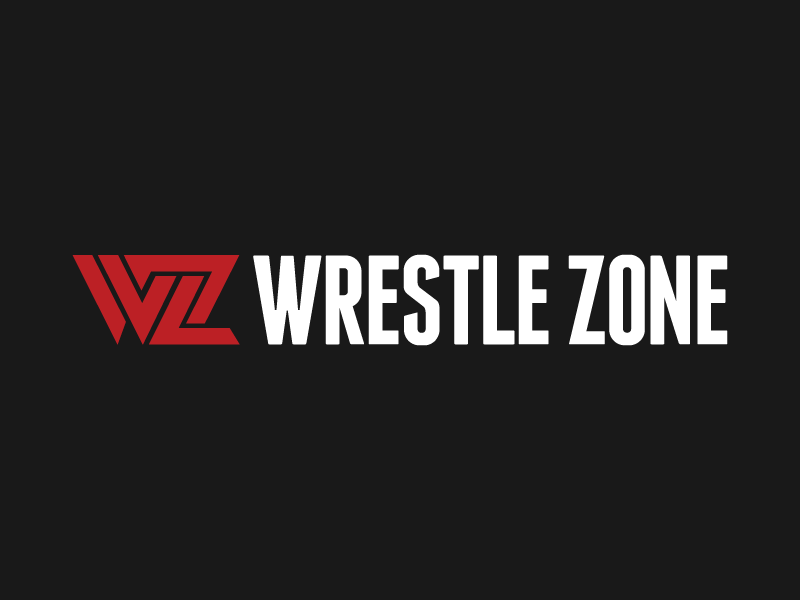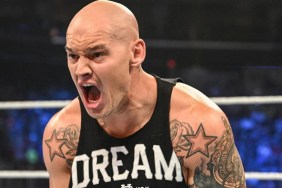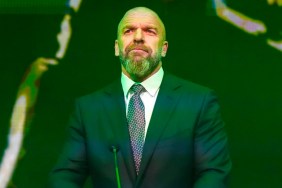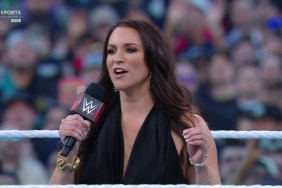Beyond kayfabe…
When did kayfabe die? Was it when Vince announced the start of the Attitude Era? Was it when Undertaker was killed off and then rose from the dead? Was it when a Hollywood actor became a World champion and not the other way around? Maybe it was when an Iranian sheik and 2 x 4 carrying American patriot were busted for drugs in the same car when they had been all over the ring fighting each other the night before? I posed the question to wrestling historian Dan Farren and he just laughed, “Kayfabe died many, many moons ago.” Farren told me the tale of “Playboy” Buddy Rose in the waning days of Roy Shires’ Northern California territory. ‘Round 1979 the not yet so rotound Rose ran into some problems with the state athletic commission and was suspended for a short time. (Yes, kids, in the olden times you needed a state approved license to be a Pro Wrestler.) Rose returned and Shires was doing everything possible to stay afloat and, thus, payoffs were light. Farren explains, “Supposedly after many arguments over money, Rose stormed into the ring at the Cow Palace and told everyone in attendance that Shires was shorting people on pay and that was why so many favorites had left or no showed.” Rose then went into detail on how Shires put a guy under a hood and claimed that he was the advertised guy. According to legend, Farren adds, Shires tried to have the local police arrest Rose, but they didn’t want to be part of what they thought was an angle. Shires got so mad he had to be restrained by the police.
So, Vince Russo didn’t create shoots and worked shoots, Dan?
“Not by a long shot.”
Now, that’s just one story. There a several others that provide proof positive that kayfabe isn’t the iron clad bubble the veterans want to sell it as and that wrestling can continue to grow and thrive when the people watching know the score.
This is NOT to say that kayfabe should be completely thrown aside. In fact, hold on to the notion. It is tradition and, above all, it’s fun. After a comedy show in Hollywood, I witnessed comedian Joe Ruggirello approach Roddy Piper and ask for a picture. Always accommodating, Piper readied himself for his typical fan photo (clinched fist and stern smile). Ruggirello asked if Piper wouldn’t mind putting him in a sleeper hold for the photo. Piper nodded and smirked, “Fine with me.” And, then like Richard Belzer a generation ago, the young comic suddenly found himself gurgling “take the picture, take the picture” while his face turned red then blue then a kind of regret-filled, “I’ve made a huge mistake” transparent white. That was Piper protecting his finisher and keeping kayfabe. I absolutely love that about wrestling, but it may be time to go beyond kayfabe.
Pro Wrestling is a great American art form. We all know what we are watching when we tune in or a buy a ticket. It is extreme theatre. It should be celebrated and sold as such. If wrestling is going to thrive again, someone or some promotion is going to have to make a dedicated effort to reach out beyond the core demographics. I have spoken to people at live California Indy shows who came as favors to friends working a match, but left totally converted and returned as excited fans; addicted to the spectacle.
“I never knew how fun it was.”
“Those guys really put their bodies on the line.”
“My whole family was entertained.”
“Better (and cheaper) then just going out to see a movie again.”
Those were the quotes. Honest. I swear it on Bobby Heenan’s Broadcast Journalist press pass. Each one of them had never seen wrestling live, rarely watched it on TV, and had no prior interest or inclination to do either. Now they eagerly await the next show. The first time I spoke to one attendee, a city councilmen in his mid-forties, he had come with his wife. The next show he had his three kids. The next time he had his wife, his three kids, his best friend, his best friend’s wife, and their three kids. One new fan turned into ten new fans within three live shows.
Finding a way to make that happen on a larger level is the key and the challenge. Easy? Of course not. People with higher pay grades are going to have to solve that riddle.
Once upon a time…
We can place blame and poke holes in the promoters and producers on the other end of the headphones, but part of the recovery is going to have to come from the wrestlers themselves. The next generation, that is. For myriad reasons, the new talent of the day are showing up to the big shows incomplete, uncooked, and still growing. Not entirely their faults, of course. The death of the territories had to happen for the wrestling boom to take place, but the biggest drawback is you no longer have talent going from town to town, carving out their characters, learning to tell stories, and knowing how to draw money. When Vince expanded and raided the territories he brought on a group of performers that knew who they were. They came as is and main event ready. You didn’t have to script the promos of the biggest stars because they already knew how to deliver one. Yeah, nowadays Vince should loosen up the reins a bit and let the characters really come out naturally, but just watch as much of NXT as you can. It’s pretty clear that even some of the more talented prospects with great looks don’t understand the most important part of the business: Tell a story.
Why did the Lawler/ Miz title match on Raw work so well and garner a lot of attention? Well, aside from being different from the norm and a good change of pace, (there’s that word again, WWE fans: Change.) the match told a good, old fashioned, simple story… and Lawler told that story with every movement and facial expression he made. There was a brash bad guy holding the title that the well-respected veteran wanted. They played it out in the ring, no bad sketches, no over the top promos, no video packages. They grabbed a microphone, set it up, and delivered. It was about simple roles and simple goals. That is the life blood of storytelling in any form and storytelling is the life blood of Pro Wrestling.
The young talent working their butts off across all of the independent shows are to be admired for their dedication and desire to dream big, but, sadly, many aren’t grasping what makes the whole machine work. You will see tassle-heavy outfits, muscular builds, and move sets that will blow the roof off the Boys and Girls club or gym they’re performing in, but after twenty minutes of hurricanranasaults into twisting megaplexs from the top rope– inverted, you will start to get bored and run to the concession table for a two dollar can of soda. (And do it before the big heel in the second match of the night… not the main event… puts someone through that very same concession table.) There is no story, no psychology, no reason to hang around for the twenty minute match. And god forbid you put a microphone in their hands. I’d rather watch a Church group performance of the Grinch who tried to steal Christmas, but found Jesus.
And this is what the talent scouts have to work with.
Now, now, now… this is not to say that every Indy worker is like this or that Lex Luger was good on the mic… but you can start to see the problem. This is why the recent news item of Tazz starting a wrestling “finishing school” was so great to hear. Though learning to take a bump and execute a suplex is very, very hard and physically tasking, it can be learned by many. To get to the next level you have to learn the rest of what makes a spot, a match, a show, and the business work. If more young wrestlers can get those skills at an earlier time, then the less we’ll have to sit through an overly scripted promo and the sooner we’ll have the next Rock, Austin, Piper, Flair, and, dare I say, Hogan.
The business is wobbling. Something has to be done. Something has to change. Something new has to come along. It is a long road and not easy, but it is time to try. The future is now… or never.
READ KEN’S RANKINGS (THAT DON’T REALLY MATTER)>>>








